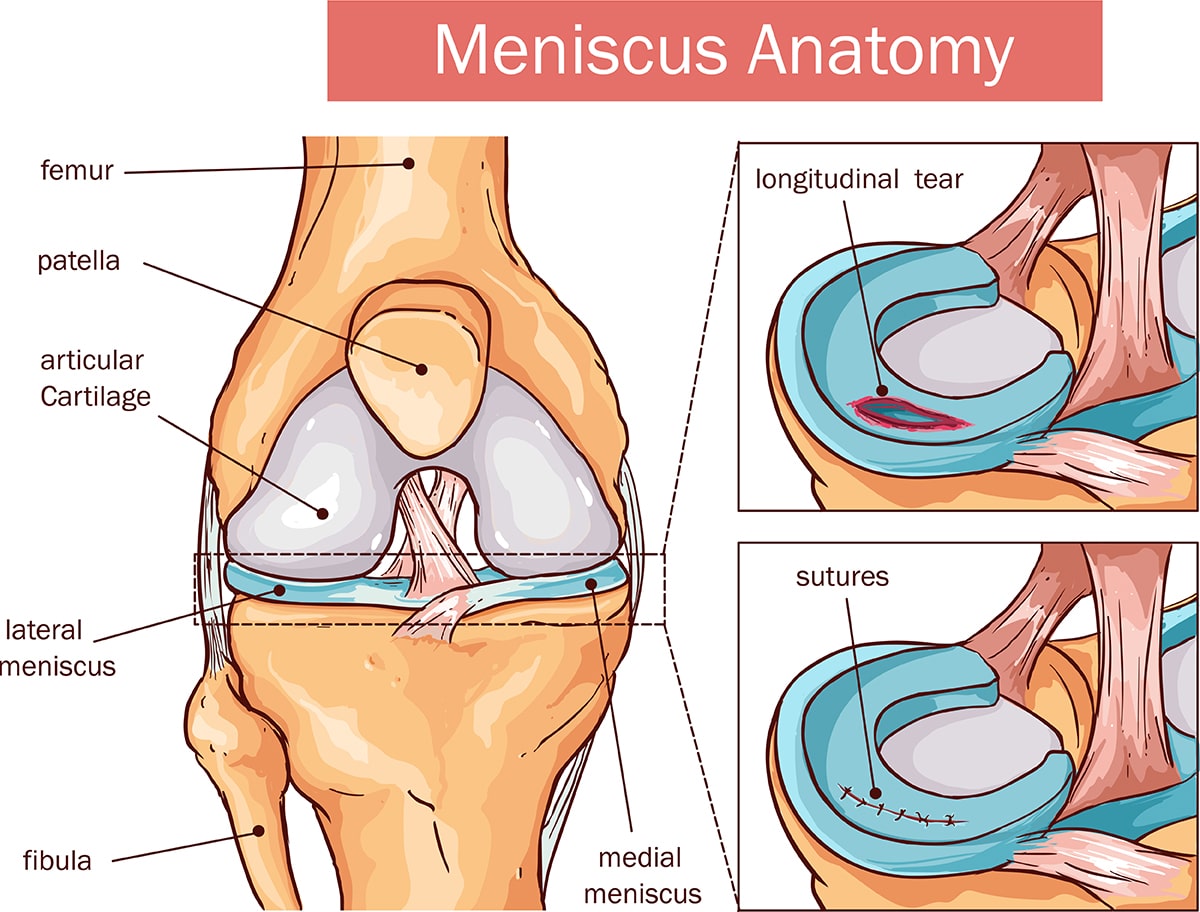

Finance
How Much Is Hand Surgery With Insurance
Published: November 13, 2023
Discover the cost of hand surgery with insurance and find out how it can be financed. Learn more about financing options for this procedure.
(Many of the links in this article redirect to a specific reviewed product. Your purchase of these products through affiliate links helps to generate commission for LiveWell, at no extra cost. Learn more)
Table of Contents
Introduction
Hand surgery is a specialized branch of medical care that focuses on the treatment of conditions and injuries related to the hand, wrist, and forearm. From carpal tunnel syndrome to fractures and tendon injuries, hand surgery aims to restore the function, mobility, and aesthetics of the hand.
While the need for hand surgery can arise due to various factors, one common concern for patients is the cost associated with the procedure. Hand surgery costs can vary significantly depending on several factors, including the severity of the condition, the type of surgery required, the surgeon’s expertise, and the location.
In this article, we will explore the cost of hand surgery and the role of insurance coverage in mitigating these expenses. We will discuss the factors that can affect the overall cost of hand surgery and delve into the experiences of patients who have undergone hand surgery with insurance. Lastly, we will provide some tips to help you navigate the process of insurance coverage for hand surgery.
Understanding the cost of hand surgery and the role of insurance coverage is crucial for individuals considering or in need of this specialized medical care. By gaining insight into these aspects, patients can better prepare for the financial implications and make informed decisions about their treatment options.
Understanding Hand Surgery
Hand surgery is a medical specialty that focuses on the diagnosis, treatment, and rehabilitation of conditions affecting the hand, wrist, and forearm. It encompasses a wide range of surgical procedures that aim to restore function, alleviate pain, and improve the aesthetics of the hand.
The hand is an intricate and vital part of the human body, consisting of bones, muscles, tendons, ligaments, blood vessels, and nerves. Any injury or condition that affects these structures can result in significant impairment and loss of function. Hand surgery addresses these issues to improve overall hand health and quality of life.
Common conditions that may require hand surgery include:
- Fractures: Hand fractures can occur due to trauma, sports injuries, or accidents. Surgery may be needed to realign the bones and ensure proper healing.
- Arthritis: Arthritis in the hands can cause pain, stiffness, and deformity. Surgical interventions, such as joint replacements or fusion, may be performed to relieve symptoms and restore function.
- Carpal Tunnel Syndrome: This condition is characterized by compression of the median nerve in the wrist, leading to pain, numbness, and weakness in the hand. Carpal tunnel release surgery can be performed to relieve pressure on the nerve.
- Tendon Injuries: Tendons in the hand can rupture or become damaged, affecting hand movement and grip strength. Surgery may be necessary to repair or reconstruct the tendons.
- Ganglion Cysts: Ganglion cysts are fluid-filled sacs that can develop in the hand and wrist, causing pain and discomfort. Surgical removal may be recommended to alleviate symptoms and prevent recurrence.
Hand surgery can be performed using various techniques, including open surgery, arthroscopy, and minimally invasive procedures. The choice of technique depends on the specific condition being treated, the surgeon’s expertise, and the patient’s individual needs.
It is important to note that hand surgery is a specialized field, and not all surgeons are trained in this area. Hand surgeons undergo extensive training and acquire specialized knowledge and skills to perform these intricate procedures effectively.
Before considering hand surgery, it is essential to consult with a qualified hand surgeon who can evaluate your condition, discuss treatment options, and provide personalized recommendations based on your specific needs and goals.
Insurance Coverage for Hand Surgery
When it comes to the cost of hand surgery, insurance coverage plays a crucial role in alleviating the financial burden for patients. The extent of coverage may vary depending on the specific insurance plan and the individual’s policy.
Most health insurance plans provide coverage for medically necessary hand surgeries. Medically necessary procedures refer to those deemed essential for the treatment or improvement of a diagnosed medical condition.
Insurance coverage for hand surgery typically includes the following aspects:
- Hospital Costs: This covers the charges associated with using the hospital facilities, including the operating room, recovery room, and overnight stays if required.
- Surgical Fees: This includes the fees charged by the surgeon and the anesthesiologist for performing the surgery and administering anesthesia.
- Diagnostic Tests: Insurance plans may cover the costs of pre-operative tests, such as x-rays, MRIs, and blood work, to determine the extent of the condition and plan the surgical approach.
- Post-operative Care: This includes follow-up visits, consultations, and any necessary physical therapy or rehabilitation sessions to aid in the recovery and rehabilitation process.
While insurance coverage is beneficial, it is essential to understand that it may not cover every aspect of the hand surgery expenses. There might still be out-of-pocket costs, deductibles, co-pays, and limitations imposed by the insurance provider.
Prior to undergoing hand surgery, it is recommended to contact your insurance provider and inquire about the specifics of your coverage. It is important to understand the policy details, including any pre-authorization requirements, in-network providers, and coverage limitations. This will help you plan and budget accordingly.
In some instances, insurance providers may require pre-authorization or documentation from a healthcare provider to establish the medical necessity of the procedure. This step ensures that the surgery meets the criteria outlined by the insurance plan for coverage.
It is crucial to carefully review your insurance policy and understand the terms, conditions, and limitations associated with hand surgery coverage. In some cases, elective or cosmetic surgeries may not be covered, or there may be specific criteria that need to be met for coverage to be provided.
If you have any uncertainties or concerns about insurance coverage, it is advisable to consult with your healthcare provider and the insurance company’s customer service representatives to clarify any ambiguities and make informed decisions about your treatment.
Factors Affecting the Cost of Hand Surgery
The cost of hand surgery can vary significantly due to several factors. Understanding these factors can help patients anticipate and plan for the financial implications of the procedure. Here are some key factors that can affect the cost of hand surgery:
- Type of Surgery: The specific type of hand surgery being performed will play a significant role in determining the cost. Procedures can range from minimally invasive treatments to complex reconstructive surgeries, each with varying complexity and resources required.
- Surgeon’s Expertise and Reputation: A highly experienced and reputable hand surgeon may charge a higher fee for their services. Their level of expertise, training, and track record of successful outcomes can contribute to the cost.
- Location: The geographic location of the healthcare facility where the hand surgery is performed can influence the overall cost. Areas with high living expenses and higher healthcare costs may result in higher surgical fees.
- Facility Fees: The fees associated with the surgical facility, including the operating room, equipment, and nursing staff, can impact the cost. Specialized hand surgery centers or hospitals may have additional charges.
- Anesthesia: The type of anesthesia used during the procedure can affect the cost. General anesthesia, local anesthesia, or regional anesthesia options may have different associated fees.
- Medical Supplies and Implants: Hand surgeries may require the use of specific medical supplies or implants, such as plates, screws, or artificial joints. The cost of these materials can contribute to the overall expense.
- Pre and Post-operative Care: The extent and duration of pre-operative evaluations, post-operative consultations, and rehabilitation services can impact the overall cost of hand surgery.
It is essential to consult with your surgeon and healthcare team to understand the projected cost of the procedure. They can provide you with a breakdown of the expected expenses, including the surgeon’s fees, facility fees, and any additional costs associated with your specific situation.
It is worth noting that insurance coverage can help mitigate these costs, but it is imperative to check the details of your policy and understand any co-pays, deductibles, or limitations that may apply.
By considering the factors influencing the cost of hand surgery, patients can make informed decisions, plan their finances, and explore any potential financial assistance options available to them.
Cost of Hand Surgery with Insurance
The cost of hand surgery with insurance coverage can vary depending on several factors, including your insurance plan, the specific procedure required, and any out-of-pocket costs you may be responsible for. Understanding the potential expenses involved can help you better prepare for the financial aspect of your hand surgery.
Insurance coverage for hand surgery typically includes the costs associated with the hospital, surgical fees, diagnostic tests, and post-operative care. However, it is important to note that there may still be certain expenses that you need to consider, such as deductibles, co-pays, and limitations imposed by your insurance provider.
Before undergoing hand surgery, it is crucial to contact your insurance provider and inquire about your specific coverage. Ask about any pre-authorization requirements or documentation needed to establish the medical necessity of the procedure. This helps ensure that your surgery qualifies for coverage and prevents any surprises with regards to your financial responsibilities.
Keep in mind that the cost of hand surgery can also depend on whether the procedure is performed in-network or out-of-network. In-network providers have negotiated rates with insurance companies, which can result in lower out-of-pocket costs. However, if you choose an out-of-network provider, you may have higher cost-sharing responsibilities.
When estimating the cost of hand surgery, it is important to consider both the surgeon’s fees and the facility fees. The surgeon’s fees typically cover their professional services, while the facility fees encompass the use of the operating room, anesthesia, and any necessary equipment.
To get a clearer picture of the potential costs, reach out to your hand surgeon’s office and ask for an estimate. They can provide information on their fees, as well as guidance on how they handle insurance claims and billing. This allows you to better understand your financial obligations and plan accordingly.
If you have concerns about covering the costs of hand surgery, there might be financial assistance options available to you. Some insurance plans offer payment plans or financial aid programs for qualifying individuals. Additionally, you can explore healthcare financing options or discuss alternative payment arrangements with the healthcare facility.
Remember, transparency and communication are key when it comes to understanding the cost of hand surgery with insurance. By working closely with your insurance provider, surgeon, and healthcare team, you can navigate the financial aspects of your procedure and focus on your recovery without unnecessary financial stress.
Case Studies: Patients’ Experiences with Hand Surgery Costs
Real-life experiences can provide valuable insights into the financial implications of hand surgery. Below are two case studies that shed light on patients’ experiences with the costs associated with hand surgery:
Case Study 1:
John, a 45-year-old office worker, experienced severe pain and limited mobility in his dominant hand due to carpal tunnel syndrome. After consulting with a hand surgeon, he decided to undergo carpal tunnel release surgery. John had health insurance through his employer, and his plan covered a significant portion of the costs associated with hand surgery.
While insurance covered a considerable part of the expenses, John still had to pay a deductible and co-pays. His out-of-pocket expenses included the surgeon’s fees, facility fees, and post-operative care costs. However, John found comfort in knowing that his insurance coverage significantly reduced the financial burden, allowing him to focus on his recovery without worrying about overwhelming medical bills.
Case Study 2:
Sarah, a 30-year-old artist, fractured her wrist in a biking accident, requiring surgery to realign the bones and facilitate proper healing. Sarah was uninsured at the time of the accident and was concerned about the financial impact of the procedure. She reached out to the hospital’s financial counseling department to explore her options.
The hospital informed Sarah about their financial assistance program, which provided discounts and grants to qualifying individuals who were uninsured or faced financial hardship. She also discovered that the hospital offered payment plans, allowing her to spread out the cost of the surgery over time. With the assistance provided by the hospital and her own savings, Sarah was able to undergo the necessary hand surgery without incurring an overwhelming financial burden.
These case studies highlight the importance of understanding insurance coverage and exploring available financial assistance options. While insurance coverage can mitigate costs for patients like John, those without insurance or facing financial challenges, such as Sarah, may need to rely on alternative payment arrangements and assistance programs to make hand surgery more affordable.
If you are facing hand surgery and have concerns about the financial aspects, it is recommended to communicate openly with your healthcare team and insurance provider. They can provide guidance, discuss payment options, and inform you about potential financial aid programs or discounts that may be available to you.
Tips for Navigating Insurance Coverage for Hand Surgery
Navigating insurance coverage for hand surgery can sometimes feel overwhelming. However, with careful planning and communication, you can better understand and maximize your insurance benefits. Here are some tips to help you navigate the insurance coverage process:
- Review your insurance policy: Thoroughly review your insurance policy, paying attention to coverage details, deductibles, co-pays, and any limitations or exclusions related to hand surgery. Understanding your policy will help you anticipate potential costs and make informed decisions.
- Verify in-network providers: Confirm whether your surgeon and the healthcare facility you plan to use are in-network. In-network providers typically have negotiated rates with insurance companies, which can result in lower out-of-pocket costs for you.
- Ask for a cost estimate: Contact your hand surgeon’s office and ask for an estimate of the costs involved in your specific procedure. This will give you a clearer idea of the potential expenses and allow you to plan accordingly.
- Submit pre-authorization: If your insurance plan requires pre-authorization for hand surgery, make sure to submit all necessary documentation as early as possible. This will help avoid delays and ensure that your procedure qualifies for coverage.
- Keep records and receipts: Maintain organized records of all documents related to your hand surgery, including receipts, invoices, and insurance correspondence. This will make it easier to track expenses and address any billing or coverage issues that may arise.
- Communicate with your healthcare team: Openly communicate with your healthcare team, including your hand surgeon, insurance provider, and hospital billing department. They will be able to answer your questions, provide guidance, and help you navigate the insurance claims process.
- Explore financial assistance options: If you are facing financial difficulties, inquire about any financial assistance programs or payment plans offered by the healthcare facility. They may be able to offer discounts, grants, or flexible payment arrangements to make the cost of hand surgery more manageable.
- Appeal if necessary: If your insurance claim is denied or you believe you were not adequately reimbursed, don’t hesitate to appeal the decision. Follow the appeal process outlined by your insurance provider and provide any necessary supporting documentation to present your case effectively.
Remember, each insurance plan is unique, and it’s essential to understand the specifics of your coverage. Don’t hesitate to ask questions, seek clarification, and advocate for yourself throughout the process. By proactively managing your insurance coverage, you can minimize unexpected costs and focus on your hand surgery and recovery.
Conclusion
Hand surgery is a specialized field that addresses a wide range of conditions affecting the hand, wrist, and forearm. Understanding the cost of hand surgery and how insurance coverage can help alleviate those expenses is essential for individuals considering or in need of this type of medical care.
Insurance coverage for hand surgery typically includes hospital costs, surgical fees, diagnostic tests, and post-operative care. However, patients should be aware of deductibles, co-pays, and any limitations imposed by their insurance plan. Consulting with the insurance provider and healthcare team can provide clarity on coverage details and help patients plan for potential out-of-pocket expenses.
Factors influencing the cost of hand surgery include the type of procedure, surgeon’s expertise, location, facility fees, anesthesia, and medical supplies. Understanding these factors can assist patients in anticipating and budgeting for the overall cost of the surgery.
Real-life case studies highlight the diverse experiences individuals may have with hand surgery costs. While insurance coverage can significantly reduce expenses, exploring financial assistance programs, payment plans, or grants can help individuals without insurance or facing financial hardships manage the cost of their procedure.
When navigating insurance coverage for hand surgery, it is important to review insurance policies, verify in-network providers, request cost estimates, submit necessary authorizations, maintain documentation, communicate with healthcare teams, and explore financial assistance options. By following these tips, individuals can maximize their insurance benefits and make informed decisions about their hand surgery.
In conclusion, being well-informed and proactive in understanding insurance coverage for hand surgery can help patients navigate the financial aspect of their procedure. By planning ahead, communicating with insurance providers and healthcare teams, and exploring available resources, individuals can focus on their hand surgery and recovery without the burden of overwhelming medical expenses.














